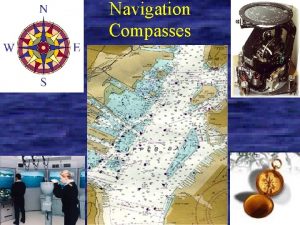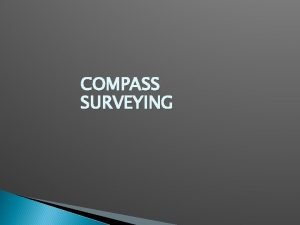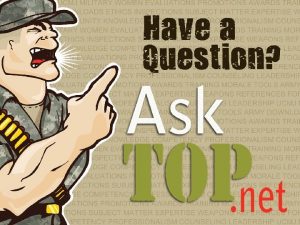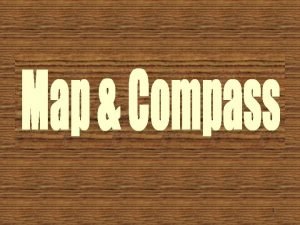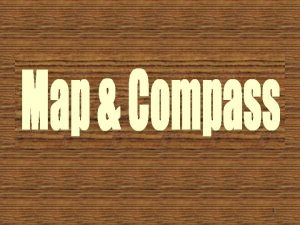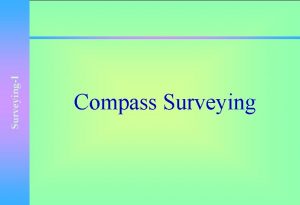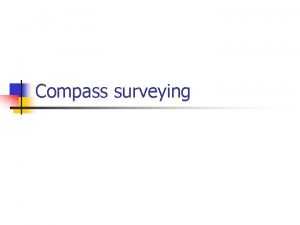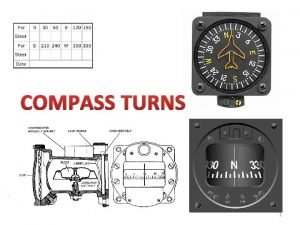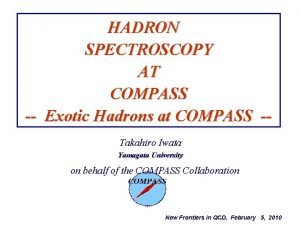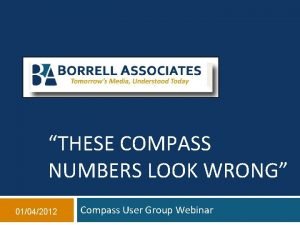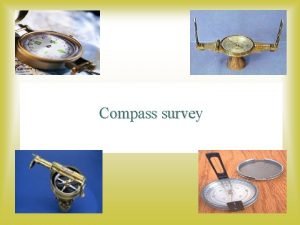Using a compass Using a compass Why do











- Slides: 11

Using a compass.

Using a compass. Why do you need a compass? • A compass helps you to find where you are and find your way. • This is very useful but can be critical if you get lost and visibility is poor. • Two main ways you use a compass are: • 'Setting' the map with the compass so that it matches what you see on the ground, and that you're pointing in the right direction. • Taking a bearing from the map and walking on a bearing. (direction)

Using a compass - Compass features • Compasses come in many designs, but most compass features are the same as those found in an all-time classic compass like the Silva Ranger. • You need to make use of some or all of the compass features for different tasks.

Using a compass. • Before you can use a compass to navigate you need to be familiar with the main features.

• 1. Baseplate - the plastic base. • 2. Compass housing - also known as the compass wheel, with a mark every two degrees covering 360 degrees, and N-S-E-W (the 'cardinal points'). • 3. Magnetic needle - red end for north, white for south. • 4. Compass lines - on the bottom of the baseplate (also called 'orienting lines'. • 5. Orienting arrow - fixed and aligned to north within the compass housing • 6. Index line - extension of the direction of travel arrow. • 7. Direction of travel arrow - the big arrow at the end of the baseplate. • 8. Map scales 1: 25 000, 1: 50 000 and metric measurer (known as Romer scales). 1 2 34 5 6 7 8

Using a compass - Setting a map. • Setting the map is the technique of positioning the map so that all the features are lined up with your own location as the central point. • What is in front of you on the ground will be in front of you on the map, what is to your left on the ground will also be to your left on the map and so on. • The writing on the map may be upside down or sideways but this is OK - having the map set is far more useful in relating the map to the ground than being able to read the writing.

Using a compass – Setting a Map. • Use the magnetic needle to find north and line up north on the map with north on the ground. • There is no need to make any adjustments or bearings with your compass - you are just using the magnetic needle to find north. • The side edges of the map will also be pointing north.

How to take a compass bearing. • Place the long edge of the compass along the path that you need to follow. • Turn the dial so the orientating arrow is pointing up North on the map parallel with the grid lines. (Blue lines on the map pointing) • Take the compass off the map and line up the magnetic needle and the orienting arrow by holding the compass flat and turning yourself round on the spot. • The ‘direction of travel’ arrow will point in the direction you need to walk in.

How to take a compass bearing.

Using a compass – Measure Distance. 1: 25 000 metric measurer (known as Romer scales). 1 = 100 metres 2 = 200 metres 3 = 300 metres 4 = 400 metres 5 = 500 metres 10 = 1 kilometres (1000 metres)

Using a compass – Measure Distance. 1 mm = 25 metres 2 mm = 50 metres 3 mm = 75 metres 4 mm = 100 metres 0. 8 cm = 200 metres 1. 6 cm = 400 metres 2. 4 cm = 600 metres 3. 2 cm = 800 metres 4 cm = 1 kilometre (1000 metres)

